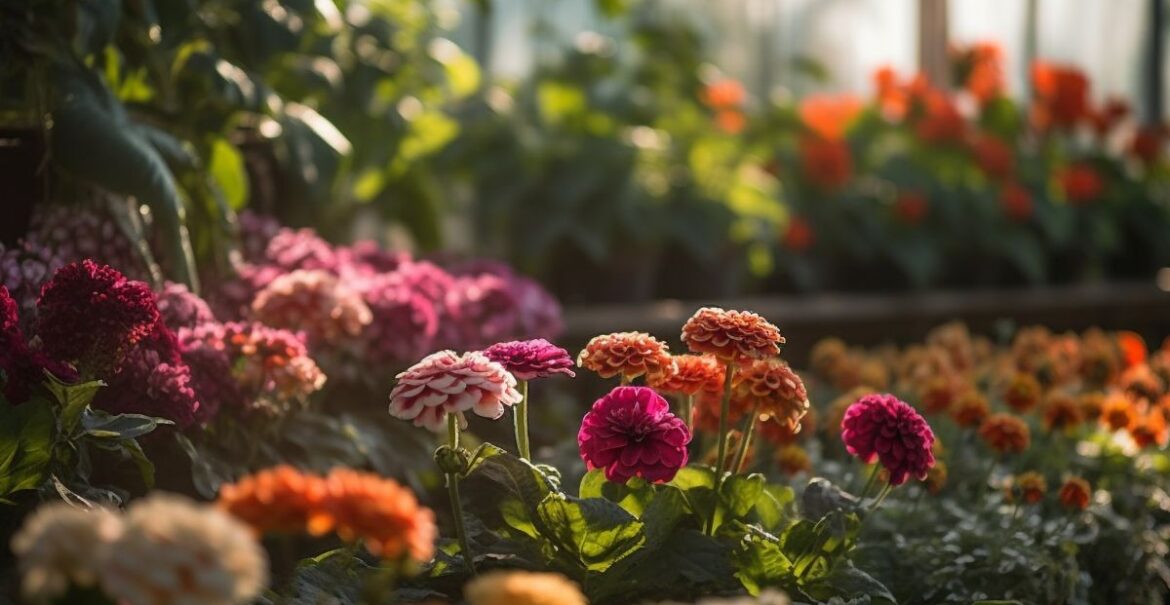Conquering the Curse: A Comprehensive Guide to Preventing Ranunculus Diseases

Introduction
The captivating ranunculus, with its vibrant blooms and undeniable charm, adds a touch of magic to any garden. However, these “buttercups of the garden” are susceptible to various diseases that can steal their beauty and threaten their survival. This comprehensive guide delves into the world of ranunculus diseases, equipping you with the knowledge and strategies to keep your floral companions thriving throughout the season.
Understanding Ranunculus Susceptibility: Creating an Ideal Environment
Ranunculus are classified as cormous plants, storing energy in underground structures called corms. While these corms fuel the plant’s breathtaking blooms, they can also be susceptible to fungal diseases when grown in less-than-ideal conditions.
Here’s a breakdown of the ideal growing environment for ranunculus to minimize disease risk:
- Soil: Well-draining soil is paramount. Ranunculus abhor waterlogged conditions, which create a breeding ground for fungal pathogens. Amend your soil with compost or other organic matter to improve drainage if necessary.
- Temperature: As cool-season flowers, ranunculus flourish in temperatures ranging from 50°F (10°C) to 65°F (18°C). Avoid planting them in excessively hot climates.
- Watering: Consistent moisture is essential, but overwatering is a recipe for disaster. Aim for deep watering at the base of the plant, allowing the soil to dry slightly between waterings.
The Rogues’ Gallery: Identifying and Combating Common Ranunculus Diseases
Now that we understand the foundational elements of disease prevention, let’s delve into the specific threats that can plague your ranunculus. We’ll explore the most common diseases, their identification methods, and effective prevention strategies.
Fungal Foes:
1. Powdery Mildew
- This fungal adversary manifests as white powdery spots on leaves and stems. It thrives in cool, humid environments and can stunt plant growth if left unchecked.
Identification:
- Look for a white, powdery coating on the upper surface of leaves and stems. The undersides of leaves may also be affected.
Prevention:
- Air Circulation is Key: Space your ranunculus plants adequately to allow for good airflow around the foliage. This helps to prevent moisture buildup and discourages fungal growth.
- Watering Technique Matters: Water at the base of the plant to avoid getting water on the leaves. Wet foliage creates a haven for fungal spores.
- Fungicide Application (Optional): For severe cases, consider applying a fungicide specifically labeled for use on ranunculus according to the manufacturer’s instructions. However, prevention is always the best medicine.
2. Botrytis Blight (Gray Mold)
This fungal disease presents as fuzzy gray mold on flowers, buds, and leaves. It thrives in cool, wet weather and can spread rapidly, turning your vibrant blooms into a grayish mess.
Identification:
- Look for fuzzy gray mold growth on flowers, buds, and leaves. The affected areas will appear water-soaked and may turn brown or black.
Prevention:
- Promote Air Circulation: Just like with powdery mildew, good air circulation is crucial to prevent moisture buildup and discourage fungal growth.
- Remove Infected Plant Material: Don’t hesitate to discard any infected leaves, flowers, or debris. This helps prevent the spores from spreading to healthy parts of the plant and infecting neighboring plants.
- Water Wisely: Maintain consistent moisture but avoid overwatering. Water at the base of the plant and avoid getting water on the foliage.
3. Fusarium Wilt
This fungal villain causes yellowing and wilting of leaves, eventually leading to plant death. It lives in the soil and can infect corms before planting, making prevention crucial.
Identification:
- Look for yellowing and wilting of leaves, often starting at the lower leaves and progressing upwards. The stems may also become weak and discolored.
Prevention:
- Healthy Corms are Essential: Purchase corms from reputable suppliers to minimize the risk of introducing the disease. Inspect the corms before planting and discard any that show signs of softness or discoloration.
- Soil Treatment (Optional): Consider treating the soil with a fungicide specifically labeled for controlling Fusarium wilt before planting. This can be a preventative measure, especially if you suspect the soil might be harboring the fungus.
- Crop Rotation is Your Friend: Avoid planting ranunculus in the same location year after year. This helps reduce the chance of the fungus building up in the soil and infecting future plantings.
Bacterial Soft Rot
This bacterial disease causes the corms and stems to become soft and mushy, ultimately leading to plant collapse. It thrives in warm, humid conditions and can spread rapidly through water or by infected tools.
Identification:
- Look for softening and mushiness of the corms and stems. The affected areas may turn brown or black and develop a foul odor.
- Infected plants may wilt suddenly and appear waterlogged, even with proper watering practices.
Prevention:
- Sanitize Your Tools: Disinfect your gardening tools with a bleach solution (1 part bleach to 10 parts water) after working with each plant to prevent the spread of bacteria. This is especially important after handling any diseased plant material.
- Water Management: Avoid overwatering and ensure the soil drains well.
- Corm Selection: Inspect corms before planting and discard any that show signs of softness or discoloration. Purchase corms from reputable suppliers who prioritize disease-free stock.
- Avoid Injury: Minimize damage to the corms during planting, as wounds can provide an entry point for bacteria.
Viral Vexations: Understanding and Mitigating Viral Threats
While fungal and bacterial diseases pose significant threats, ranunculus can also be susceptible to viral infections. These microscopic villains are spread by insects like aphids or through contact with infected plant material. Unfortunately, there’s no cure for viral diseases in plants, so prevention is paramount.
Here’s a breakdown of some common viral diseases affecting ranunculus and strategies to minimize their impact:
Ranunculus Mosaic
This viral culprit manifests as mottled patterns and distortions on leaves, often accompanied by stunted growth and deformed flowers.
Identification:
- Look for leaves with a mosaic pattern of yellowing and green areas. Leaves may become distorted and crinkled. Flowers may also appear malformed and stunted.
Prevention:
- Purchase Certified Disease-Free Corms: Obtaining healthy corms from reputable suppliers who prioritize disease-free stock is crucial. Inspect the corms before planting and discard any that show signs of discoloration or unusual markings.
- Monitor and Remove Infected Plants: Regularly inspect your ranunculus for signs of viral infection. If you suspect a plant is infected, promptly remove it from the garden to prevent the virus from spreading to healthy plants.
- Control Insect Vectors: Aphids and other insects can transmit viruses between plants. Implement measures to control insect populations in your garden, such as using insecticidal soap or introducing beneficial insects like ladybugs.
Maintaining healthy ranunculus plants requires vigilance and proactive care. By understanding the common diseases that affect ranunculus and implementing effective prevention and management strategies, you can enjoy the vibrant beauty of these flowers throughout the growing season. Regular monitoring, proper cultural practices, and timely intervention are key to maintaining a disease-free ranunculus garden.
By following these guidelines and staying informed about potential threats, you can ensure that your ranunculus plants remain a stunning and resilient addition to your garden. Happy gardening!








No Comments